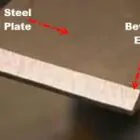You need a MIG welder whether you’re a big company with a large number of trained welders or a small shop with little welding work. The MIG welding machine can be used by anyone with any level of skill. It can also be used with many different kinds of materials and for a wide range of welding jobs. To know how safe our welders are, it’s important to know about these risks. The hazards assciated with MIG Welding is many but we will talk about 5.
A MIG welder is a shielded metal arc welder that uses high voltage to melt the wire that is fed through the MIG torch and applied to the point of the weld. When the wire cools, it forms a bond between the two metals. The shielding gas that flows through the torch keeps the welds from rusting. When an electrical arc, hot metal, and gases come together, it could be dangerous for the people working nearby. This blog is about 5 common MIG Welding hazards.
The MIG Welding Hazards
Fire dangers: The welding process uses a live spark and air that can be breathed, both of which can start a fire. This is the worst of all hazards. For the safety of the workers, flammable and combustible materials must be kept away from the welding area. This will stop a fire from starting.
Risks to the lungs: There are many risks to the lungs when welding metal. The filler material could make poisonous gases on its own. The substance on the surface of the metal to be welded, such as paint, may give off toxic gases and fumes, and these dangerous gases and fumes may push out the oxygen in the work area. Carbon monoxide gas that could be dangerous could be made by the process.
Eye burn and photophobia can happen if you look directly at the bright, hot arc that melts the metal wire. It could burn the cornea, which could lead to sensitivity to light, tears coming out of the eye, and pain. Vision may get worse, either for a short time or for good. This risk can hurt the welders and anyone else in the area who can see the weld zone.
Burns: Droplets of melted metal that splash and spray from the weld zone can burn skin that isn’t covered. The workpiece may be hot to the touch for a long time, which can cause a burn. Sunburns can sometimes be caused by UV light.
Ergonomics dangers: If the workpiece isn’t in the best place, the welder has to twist their bodies, which can lead to ergonomics injuries. If the helmet is put on with a jerk, the way it is placed with the torch may cause an ergonomic injury if it is done often.





